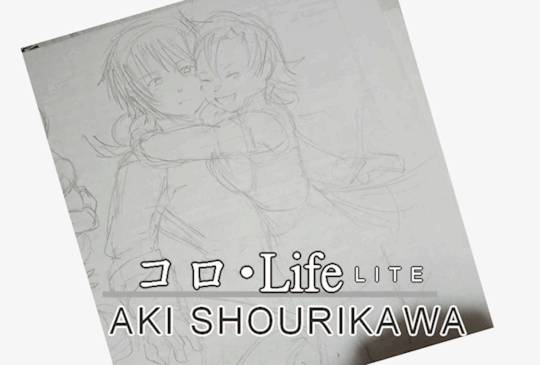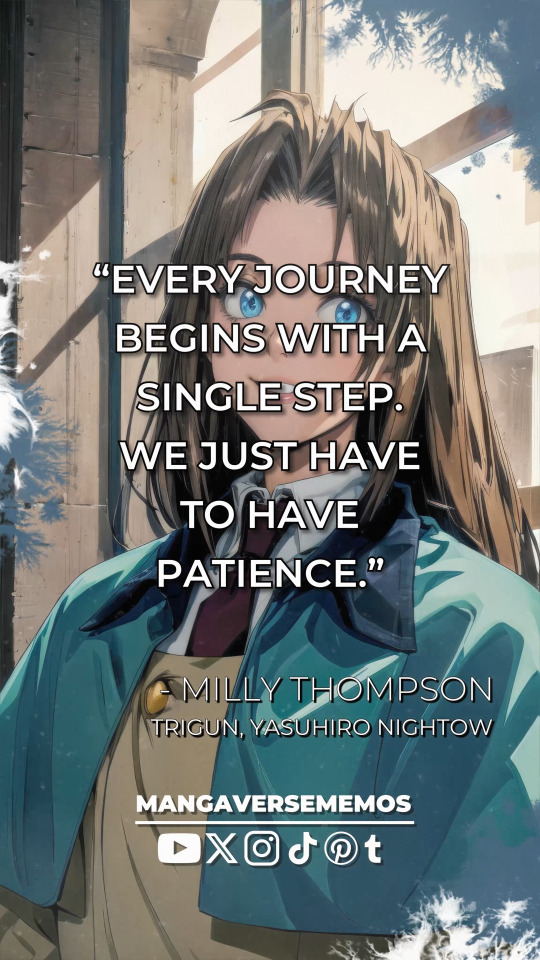#StepByStep
Explore tagged Tumblr posts
Text
The only thing I'm still afraid of is not becoming the person I need to be for her

401 notes
·
View notes
Text

Door and stairs (deux passions réunies)
https://www.instagram.com/p/DI_DHH4Mjzg/?igsh=OGZuYWMxYzRqdTYz
#door#instadoor#heinjtadore#knockingOnHeavensDoor#porte#instaporte#heinjtapporte#peuUnePorte#nainPorteQuoi#pasDePorte#benSi#porteAporte#theDoors#enFlanant#cityShot#urbanphotography#stairs#instastairs#stairwayToHeaven#stairwayToNowhere#escaliers#marches#caMarche#benNon#stepByStep#desMarches#attentionAlaMarche#marcheAsuivre#marcheApresMarche
28 notes
·
View notes
Text



勝利川秋 | AKI SHOURIKAWA
Animated Drawing Process ・25.02.20
Lie Ren and Nora Valkyrie from RWBY fan art
Finished art:
#drawing process#stepbystep#イラスト#anime#animated process#coloring#illustration#art process#animated#fanart#lineart#rwby#rwby fan art#renora
21 notes
·
View notes
Text

Art Progress (ft. #GlamrockFreddy) 🎨
Check out all my socials at my Carrd Page
#fnaf#FiveNightsAtFreddys#fnafsb#fnafsecuritybreach#fnafsecuritybreachfanart#fnafart#fnaffanart#fnafarts#fnaffanarts#fnafartwork#fnafartworks#SecurityBreach#securitybreachart#GlamrockFreddy#fnafglamrockfreddy#glamrockfreddyfanart#art#arts#artwork#artworks#digital#digitalart#artprogress#stepbystep#five nights at freddy's#fnaf art#fnaf fanart
25 notes
·
View notes
Photo

New Tutorial and Adoptable Bases ! Visit my KOFI shop! https://ko-fi.com/s/ffd2a25625 #furry #furryart #fursale #fursona #adoptable #werewolf
Posted using PostyBirb
#furry#anthro#anthro art#furry art#furries#illustration#fantasy#fantasy art#art#animal#kemono#wolf#fursona#werewolf#lycan#lycanthrope#worgen#adoptables#characterdesign#tutorial#howtodraw#stepbystep
9 notes
·
View notes
Text

need_spare_parts.gif pencil sketch → full illustration.
#gif#sketch#stepbystep#pencil sketch#art#drawing#artists on tumblr#artwork#illustration#artist#fineliner#lineart#original#original art#my art#oc#original character#character design#cyborg#cyberpunk#science fiction#robot#dystopia#detail#oc art#black and white#cyberpunk art#ink#gif art
34 notes
·
View notes
Text

#stairs #instastairs #stairwayToHeaven #stairwayToNowhere #escaliers #marches #caMarche #benNon #stepByStep #desMarches #attentionAlaMarche #marcheApresMarche
#stairs#instastairs#stairwayToHeaven#stairwayToNowhere#escaliers#marches#caMarche#benNon#stepByStep#desMarches#attentionAlaMarche#marcheApresMarche
36 notes
·
View notes
Text

勝利川秋 / AKI SHOURIKAWA
Animated Drawing Process ・2019.2.17
Reyson from Fire Emblem fan art
Finished art:
・ Main Blog・Art Blog・KoroLife *in-depth process・
#drawing process#stepbystep#イラスト#anime#reyson#animated process#fire emblem#fire emblem heroes#feh#fe#radiant dawn#art process
22 notes
·
View notes
Text
Step by step art Behance
#art#artists on tumblr#artwork#illustration#concept art#2d#drawings#2d art#stepbystep#speed paiting#speedpaint#cg2d#cgart#concept#conceptart#setting#character#rendering
2 notes
·
View notes
Text
2-Factor Authentication (2FA) vs Multi-Factor Authentication (MFA)
MFA and 2FA are authentication methods employed to secure online identities beyond the traditional username and password combination.
The distinction lies in the number of authentication factors utilized.
A Thread

#accountrecovery#askme#cybersecurity#digitalsecurity#feedback#guide#help#howto#socialmediahelp#stepbystep#2FA#MFA
2 notes
·
View notes
Photo

Organic gardens are as good for the earth as they are for its lucky inhabitants. The secret to growing a healthy, lush garden all begins with a single seed. This guide covers all the basics for starting seeds so that you can revel in your gardening wizardry this spring. Are you planning to start a garden this year? Congratulations! It’s a big deal! Whether you are a seasoned gardener or a beginner, growing a garden is good for everybody. It feeds the soul and the soil and can even feed your family. Starting a garden off right with healthy seeds sets the roots for how the garden will grow for the rest of the year. Sure, you can help manage sick plants and dried-out leaves, but starting seeds with good intentions and mad skills will make the rest of the year’s jobs a whole lot easier. Some of you may think I’m crazy, but I believe that how you care for seedlings will be reflected in the plant that grows and the fruit that ripens. The garden is resting now. Perhaps even covered by a blanket of snow. Now, there is ample time to slow down, plan, and nurture the very best plants to grace your garden beds. Let’s get this gardening season started with this guide on starting seeds. Experienced gardeners can save the seeds from their plants to use the next year. The 10 Steps for Starting Seeds “I made this!” I gloat while serving up a dish made entirely of food that I grew in my garden. Well, “gloat” is probably not the right word. I prance around like the fantastical wizard I am, cheering about my mad skills in making real food from tiny seeds. It took me months. I had some fatalities. But overall, it’s fairly simple to grow from seeds. And more importantly, it’s awesome. Here are some basics for how to start seeds at home. Make sure to label your seeds so you know exactly what they all are. Trust me, you will forget. 1. Choose Your Seeds Starting seeds in the spring (or even winter) is one of the best ways to save money. While you could buy a pack of snapdragons at the garden centre to fill your containers, why not start them from seed at a fraction of the price? You also get way more varieties when you go the seed route. This list covers my favourite annual flowers to grow from seed, while this list covers some of my go-to perennial flowers. Keep in mind that starting perennials from seed is often more difficult and time-consuming, so it is better suited for those with a few gardening seasons under their belt. Seed companies in your area should sell the right seeds for your climate but do make sure that you pick the right plants for your experience level. If you’re a seedling yourself when it comes to propagation, don’t bother starting watermelons in Northern Ontario. Many seed companies will also list a difficulty rating that will help to guide you. You might even be able to find some seeds in a seed library. 2. Read the Packet If you want the best possible start for your seeds, your best bet is to read the packet. Most seed packets will list everything you need to know to start the seeds and their special requirements, like how deep to plant the seed, how much light they need, how long they’ll take to germinate, soil temperatures required, etc. I cover all the basics of reading a seed packet in this post if you want to ensure you’re buying the right seeds and those that will actually thrive in your garden. 3. Choose a Container You can start seeds in just about anything you can find around the house that will create a mini-greenhouse, or you can buy all sorts of interesting setups to best suit your needs. Greenhouse Kits Many different greenhouse kits are available now. Most will have a plastic tray with a clear plastic greenhouse dome. Some come with a soilless mixture for starting seeds, like peat pellets that expand to a mini seed pot when soaked in water. Others may have coconut fibre pots that you can transplant right along with your seedling. Others may even have a heat mat that gently warms soil to improve germination. The beauty of these kits is that you can start a large number of seeds individually in one tray (up to 72) and many are made for small spaces like windowsills. The drawback is that the seedlings will need to be replanted, either in the garden or a larger pot, in a few weeks. Leaving seedlings in small pots with no nutrition will cause unwanted stress to the plants. Seed Starting Trays Garden retailers will sell many different types of professional-grade seed-starting trays, domes, and inserts with features like root training, moisture control, automatic watering, and grow lights. Certainly, many of these features have value in starting the year’s plants off on the right foot and can be used over and over. Household Items An inexpensive and creative way to start seeds is to use household items as seed containers. Lining a seed tray with pots made from toilet paper tubes, newspaper, or egg cartons will cost nothing At times, your family may think you’ve gone mad, given how excited you will become when you get to take home the plastic cake dome from the party. But come on, that’ll make a really great greenhouse dome, right? Search for biodegradable paper products you can plant right in the ground or food-safe plastic containers that you can use as mini-greenhouses for your containers if you are on a budget. Paper egg cartons are one of my favourite inexpensive household items to use as a seed starting container. 4. Growing Medium You can buy a pre-made seed starter soil, or you can make your own with a mix. I make my own mix using a peat-moss alternative, sterilized compost, perlite, and vermiculite. This mixture is light and holds moisture well, so it is wonderful for helping seeds germinate. All growing mediums will need some time to absorb water, so add moisture and let it soak in for an hour before planting. Be sure to use a sterile mix if you are starting seeds indoors. Soil or compost from the garden will bring in all sorts of critters, like soil gnats, which will drive you freakin’ crazy as you run around your propagation trays like a mad person swatting and squashing an endless supply of teeny tiny flies. Seed starting mix needs to be sterile. 5. Water Your Seeds Germination will be best in a moist environment for most seeds, so keeping the soil damp and a greenhouse dome on top will keep the right amount of humidity for optimal germination. Keep the soil from drying out by checking it daily. Water gently, from the bottom where possible, so as to not damage the seedlings about to emerge. When learning how to start seeds, having just the right amount of water is important. You never want the seeds to dry out, nor do you want the soil to be soggy. Make sure to vent your container regularly to prevent fungal growth. 6. Get the Right Lighting Seeds won’t need light until they emerge from the surface of the soil, but then they will need strong sunlight for most of the day to prevent them from becoming leggy (overly tall and spindly = weak). You can supplement a lack of sunlight with fluorescent lighting, either by buying a set of grow lights made for seed starting or by making your own with fluorescent shop lights. You don’t need fancy lights to help your plants grow. This was my DIY set-up! 7. Treat Damping Off “Damping off” is a term for a fungal growth that looks like fuzzy hairs on the seedling stem. This fungal growth will kill the seedling, so it’s bad, really bad. To prevent damping off, occasionally spray the greenhouse dome with a bottle of 3% food-grade hydrogen peroxide and vent it on a regular basis to regulate humidity. I also recommend watering with my chamomile fungicide spray. Chamomile naturally prevents diseases such as damping off. It’s almost impossible to get rid of damping off, so prevention is best. 8. Thin Your Seedlings Generally, the seed instructions will suggest that you plant 2-3 seeds per pot and thin out all but the strongest. This seems to be the thing that some gardeners have the hardest time with. If three strong tomato seedlings have popped up in one tiny peat pot, then the gardener rushes off to get tweezers to separate out the three wee plants and re-pots them all. More inexperienced gardeners will damage each plant, giving none a strong chance at survival, so it’s best that you grab a clean pair of scissors, snip all but the strongest seedling in each pot and be done with it. Choose the strongest seeding and snip any remaining seedlings in the same container. 9. Hardening Off As the seedlings grow into plants and the date to plant outside gets near, it’s time to start hardening them off or toughening them for their natural environment. I like to start by opening a window a few hours a day so they get a breeze. Then, start moving the trays outside, out of direct sunlight, for a few hours. Start at one hour and gradually increase to a full day outside. By the time your plant date has arrived, you can safely transfer your tough little soldiers directly into the ground, with some delicious compost and a thorough watering, to brave the elements on their own. Seedlings are used to indoor conditions, so make sure to gradually transition them to outside. 10. Set Your Expectations Starting seeds is such an interesting and magical process, especially for children, so it’s the perfect activity to do as a family this coming spring. The months that you’ve spent germinating and raising seedlings will be a series of trial and error, so expect some loss. Not every seed will germinate, not every seedling will survive being transplanted, and not every kind of plant will do well in your garden. The gains will be clear when you have piles of leafy greens taking up every inch of your windowsills, bursting to get outside. Starting the plants off yourself ensures that you are in charge of the health of the plant and can control what goes into it. And the satisfaction you’ll feel from starting your own seeds is tremendous. My kiddo loves starting seeds with me and planting them in the garden. FAQ About Starting Seeds Should you cover seeds with plastic? Yes. This helps to keep the moisture in and increase temperatures. It essentially acts as a mini greenhouse.Cover your seeds with a clear plastic container (I like salad boxes) right after you’ve planted and watered your plants. Every day, vent the dome and clean it with food-grade hydrogen peroxide to prevent damping off. Leave the dome on until the seedlings reach it. Do seedlings need sunlight to survive? Yes. Seeds don’t need sunlight until they’ve germinated (sprouted above the soil). Prior to this, the seed carries all the energy the plant will need to sprout. But once it has germinated, the seedling will need lots of sunlight to grow well. Otherwise, they get leggy and weak trying to reach for more sun.Consider using a grow light if you can’t get enough sunlight in a windowsill for your seedlings. More Tips for How to Care for Seedlings Source link
#GARDEN_TOOLS#FREQUENTLY_ASKED_QUESTIONS#GARDENING_TIPS#GUIDE#MONTH_FEBRUARY_WEEK_1#SEED#SEED_STARTING#SEEDS#STARTING#STEPBYSTEP
2 notes
·
View notes
Text


Aaliyah and her beautiful healthy hair on the cover of “Sisters In-Style Present: Step by Step” February 1997 magazine. Photography by @michaelbenabib
#aaliyah#ripaaliyah#foreveraaliyah#StepByStep#Magazine#magazinecover#Hair#BlackHair#SisterinStyle#February
12 notes
·
View notes
Text
Step-by-Step: How to Apply for Non-Profit Assistance
Are you seeking financial or resource assistance from a non-profit organization? Here’s a detailed, step-by-step guide on how to apply for non-profit assistance. Whether you’re looking for housing, medical aid, or general support, this guide will help you navigate the application process effectively and improve your chances of receiving help.

Step 1: Research the Right Non-Profit: Start by identifying organizations that align with your needs. Look for non-profits that specialize in areas like housing, healthcare, food assistance, or education. Make sure they serve your geographic region and offer the specific type of aid you need.
Step 2: Check Eligibility Requirements: Each non-profit has different requirements. Review their eligibility criteria carefully, whether it's based on income, location, or other factors. This step ensures you qualify before moving forward with your application.
Step 3: Gather Necessary Documents: Prepare any required documentation, such as proof of income, identification, or details about your situation. Having these ready will speed up the application process.
Step 4: Fill Out the Application: Many non-profits offer online applications, but some may require you to apply in person or by mail. Fill out the form carefully, providing accurate information to avoid delays.
Step 5: Follow Up After Submission: After submitting your application, follow up with the organization to check the status. Keep track of any deadlines or additional steps required to ensure your request is processed quickly.
Step 6: Be Patient and Persistent: Non-profit assistance programs can be competitive. It’s essential to be patient, as processing times may vary. If your initial request isn’t approved, don’t hesitate to ask about reapplying or seeking other resources.
3 notes
·
View notes
Text

"Every journey begins with a single step. We just have to have patience."
-Milly Thompson
Trigun, Yasuhiro Nightow
#mangaquotes#anime#animequotes#manga#trigun#millychan#quote#journey#stepbystep#moveforward#patience#life
5 notes
·
View notes
Text
youtube
new Last Minute Minis process vid is up! If you've got 5 minutes to spare, check it out and spread the word!
#speedpainting#chill#chillout#calm#art#processvideo#skeleton#fantasyartist#miniart#stepbystep#digitalart#relaxation#dnd5e#monsterart#chillmusic#dungeonsanddragons#miniature#monster#Youtube
2 notes
·
View notes
Text

#stairs #instastairs #stairwayToHeaven #stairwayToNowhere #escaliers #marches #caMarche #benNon #stepByStep #desMarches #attentionAlaMarche #marcheApresMarche #snow #instasnow #neige #auBoulot
#stairs#instastairs#stairwayToHeaven#stairwayToNowhere#escaliers#marches#caMarche#benNon#stepByStep#desMarches#attentionAlaMarche#marcheApresMarche#snow#instasnow#neige#auBoulot
22 notes
·
View notes